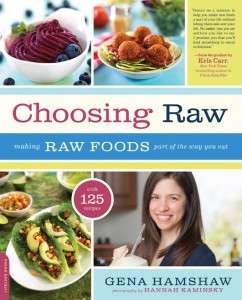 Gena Hamshaw is a certified clinical nutritionist and author of the popular blog Choosing Raw. Her work has been published in O Magazine, VegNews Magazine, Food52,and Whole Living Daily. A former book editor, Gena is currently a pre-medical, post-baccalaureate student. She hopes to bring an integrated and evidence-based approach to a career in health care.
Gena Hamshaw is a certified clinical nutritionist and author of the popular blog Choosing Raw. Her work has been published in O Magazine, VegNews Magazine, Food52,and Whole Living Daily. A former book editor, Gena is currently a pre-medical, post-baccalaureate student. She hopes to bring an integrated and evidence-based approach to a career in health care.
I originally chatted with Gena via email last year when I was doing PR for a new book launch, and then I had the pleasure of meeting her in person at Vida Vegan Con in Portland last spring. We recently had another opportunity to chat, and we talked about veganism, raw food and her new book Choosing Raw.
Chic Vegan – What motivated you to become vegan? Was it an overnight switch or more gradual shift?
Gena Hamshaw – It was definitely gradual. I stopped eating red meat as a kid (after watching Bambi) and cut back on chicken and fish very gradually during college and the two years after. Not long after this, a gastroenterologist whom I’d seen for chronic GI illness suggested that I eliminate dairy. Having never cared for eggs, I was now close to vegan, and I decided to see how I’d feel if I made the transition entirely. I did, and I’ve never looked back.
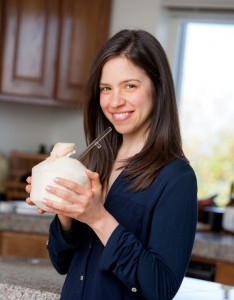 CV – What was it that led you to try raw foods?
CV – What was it that led you to try raw foods?
GH – An ongoing effort to manage my digestive illness. It was very helpful in the short term, and then I just fell in love with the beauty and aesthetics of raw food.
CV – You describe yourself as a “raw food enthusiast”rather than a “raw foodist”. Can you explain the difference?
GH – Well, when I hear the words “raw foodist,” I assume that they describe someone who eats either an all raw or “high raw” (loosely defined as 85% or more) raw diet. I’m certainly not a raw foodist by that definition. I eat a lot of cooked food, depending on my mood and the season and whether I’m traveling or not. I’d say it’s about a 50/50 balance at this point. But raw foods have informed my cooking style very strongly, and I have tremendous passion for them. To this day, raw recipe development is my favorite kind.
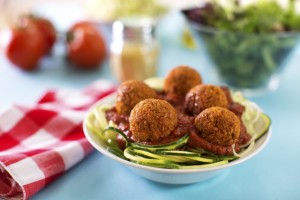 CV – What is your diet like? What do you typically eat in a day?
CV – What is your diet like? What do you typically eat in a day?
GH – It’s varied! In the summer, I often start my day with avocado toast or a smoothie. Lunch is often a salad with tons of fixings (legumes, seeds, quinoa, etc.). I snack on homemade snack bars and hummus and fruit, and dinner is typically a cooked entree (grains, veggie burgers, pasta) with my boyfriend. If I’m dining solo, it’s often another meal sized salad. I love chocolate and banana ice cream for dessert. In the winter, I usually have oats, rice pudding, or chia pudding for breakfast.
CV – Congratulations on your wonderful new book Choosing Raw! What inspired you to write it?
GH – I think that the common perception of eating raw is that it’s a conversion experience, that the goal is to “go raw,” eventually. I wanted to show folks that you don’t have to choose between raw food and cooked. I wanted to demonstrate that you can integrate these eating styles (cooked and raw vegan fare) to create a varied, exciting, creative diet, without feeling any pressure to adhere to rules. Aside from that, I wanted to present a vision of veganism as it has always been for me: abundant, joyous, healthful, and conscientious.
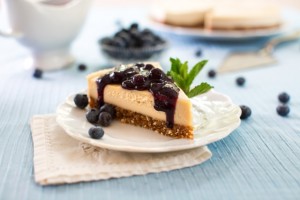 CV – Do you have any favorite recipes from the book?
CV – Do you have any favorite recipes from the book?
GH – Yes! The heat-free lentil and walnut tacos are a big favorite, as are the mediterranean cauliflower rice, the raw carrot falafel and hempseed tabouli, the raw fig bars, and the blueberry cheesecake. A few of the dressings are favorites, too, especially the spicy cilantro vinaigrette.
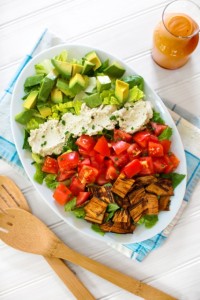 CV – In your work as a nutritionist, do you find that there’s one myth about the vegan diet that’s most persistent? What can we do to dispel it?
CV – In your work as a nutritionist, do you find that there’s one myth about the vegan diet that’s most persistent? What can we do to dispel it?
GH – There’s a very harmful pattern I see a lot of these days, in which someone goes vegan, but then becomes convinced that her vegan diet isn’t “pure” or “clean” or healthful enough. She (or he) begins to winnow down food groups: grains, wheat, soy, oil, all sugar. Eventually, what’s left is a very narrow regime of vegetables and little else, no indulgences, no variety. It’s a dangerous place to be, because at that point one’s veganism–which could in theory be a robust, well rounded diet–has become the limited and paltry regime that so many critics believe it to be.
I think it’s important, both for the sake of longterm health and because everyone who eats vegan is to some extent an ambassador of the lifestyle, for us to nourish ourselves well, to *not* embark upon limited diets or eliminations or cleanses. I think it’s important that we not confuse veganism with excessive healthfulness and fear of everything that’s a little bit sweet, or salty, or oily, or starchy. Human bodies are strong, and they run on dietary variety. We don’t need to limit ourselves to a select group of so-called “healthful” foods in order to thrive; in fact, such limitation may actually be more of a health risk than a health boon. And I say this, by the way, as someone with a long and colorful history of food restriction and elimination, and who has learned the hard way that “everything in moderation” is a far healthier approach than excessive vigilance.
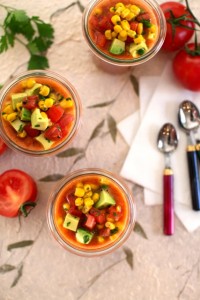 CV – What advice would you give someone who wants to follow a healthy vegan diet but doesn’t know where to start?
CV – What advice would you give someone who wants to follow a healthy vegan diet but doesn’t know where to start?
GH – Read blogs. Buy books. Talk to other vegans and ask about their favorite recipes. Get inspired by what’s out there, because there is SO much great vegan information and recipe resources. Then, start cooking, meal by meal. “Add first, and subtract later” is my favorite vegan motto, and by that I mean that you should focus first and foremost about what you’re adding to your diet, what you’re incorporating (new recipes, new techniques), rather than what you’re giving up.
CV – What is your favorite vegan indulgence?
GH – Chocolate, creamy soy lattes with sugar, and decadent desserts from Pure Food and Wine in New York.
CV – In your wildest dreams what will your life look like in 5 years?
GH – I really don’t know. Five years ago I had some very strong ideas about what I wanted my life to look like today, and none of them panned out. It was very dizzying to let go of my goals and assumptions, but it was also a wonderful life experience, and I’m very happy, no matter how different things are from what I expected. So I try not to make too many predictions. I hope I have a life that’s rich, interesting, full of experiences from which I learn, full of surprises and and adventure. I hope I love and am loved, deeply. And I hope I can help people.
Photos by Hannah Kaminsky
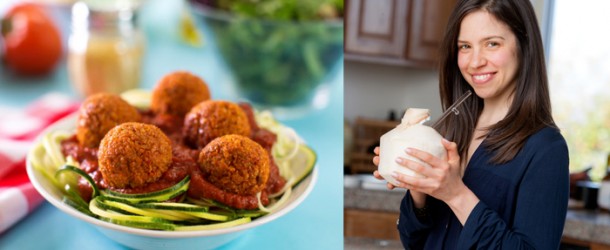
Great to have someone so smart and articulate spreading the word about nutrition and animal cruelty. And thanks for your help Diane in getting the word out about Vegan and Raw lifestyle as well!
Great article.
Thank you, Angela! Glad you enjoyed the interview.